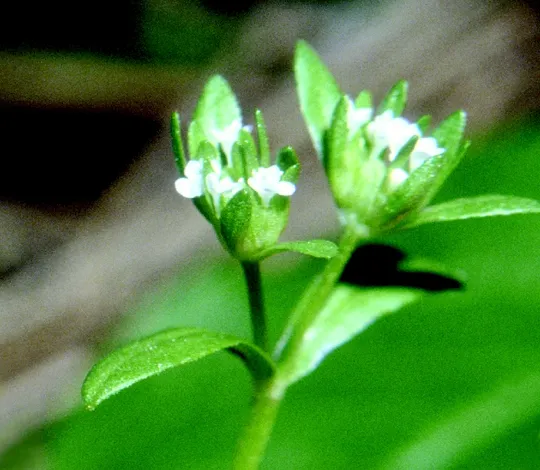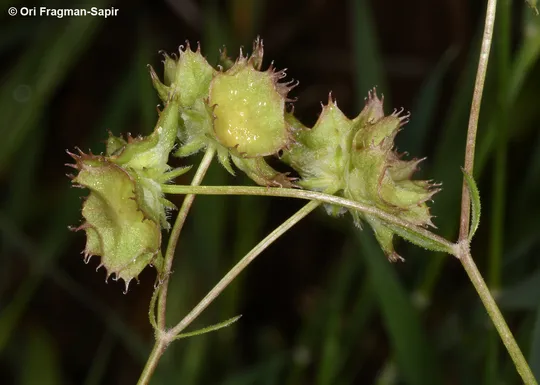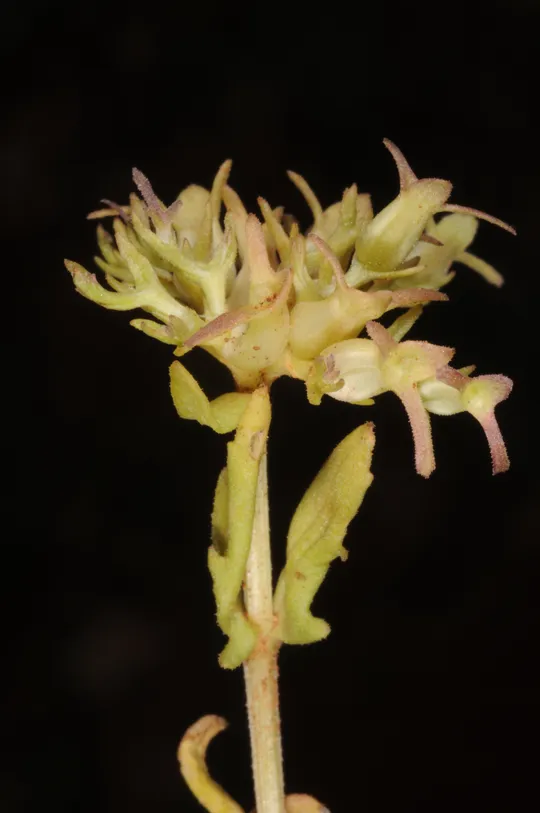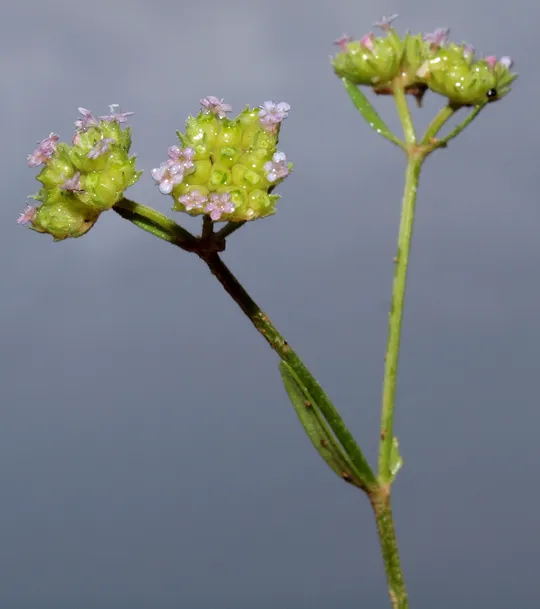Kotchy's Cornsalad
Valerianella kotschyi


Valerianella kotschyi grows in
Samaria and the Judean Mountains at three sites, although according to
estimates there are six sites. In Samaria, it is located near Kida, and in the Judean Mountains in Kfar Etzion and
in Ma'on. In the Judean Mountains it was collected for the Jerusalem Herbarium
in the 1930s and 1940s as well as from Neve Sha'anan in Jerusalem and from Bani
Na'im, but it has not been found since at these places. In the past (the 1920s)
V. kotschyi was also collected in the Jezreel Valley in the vicinity of En
Harod and Tel Yosef, but it is now extinct there. These two sites were marked
on maps on the Gilboa foothills. This montane species was probably collected
during Eig and Factorovskyi's excursions on the Gilboa slopes and not in the
Jezreel Valley itself.
Traditionally cultivated agricultural fields on deep
soils.
The
genus Valerianella
consists of about 80
species found mainly in the Mediterranean Basin and eastwards to central Asia,
along the Irano-Turanian region. In Israel 14 species grow, which can be easily
identified by the calyx at the head of the fruit. V. kotschyi
is very
similar to two other species: V.
coronata, a very common species in the Mediterranean region and
in the transition zone has a characteristic fruit crowned by the calyx that has
almost equal lobes, each one ending in a long hooked point. V. dactylophylla
grows in the transition forest zone on Mount Hermon at an altitude of 1400-1800
meters, and has a characteristic calyx carried on a long narrow beak. In other Valerianella species in Israel the fruit is completely different: a
swollen fruit (V. vesicaria), has three hooked teeth (V.
pumila), has three
winged lobes (V. dufresnia) and so on.
·
The range of Valerianella
kotschy in Israel is shrinking: the number of regions decreased
from three to two and it is now extinct from a number of sites on which it was
observed and collected in the past..
·
Traditionally
managed agricultural fields on heavy deep soil are disappearing and cultivation
is becoming more intense. This is probably the reason for the extinction of V. kotschy
populations at some sites, and this change constitutes a threat to the
remaining populations.
·
V. kotschy
is not protected in nature reserves in Israel.
·
V. kotschy
does not appear in the red plant lists of other countries.
Patches of heavy soil where traditional agriculture is still
practiced and Valerianella kotschy still grows should
be preserved.
Valerianella
kotschyi grows in Israel, northern Jordan, Syria, Lebanon,
central and eastern Turkey, northern Iraq and Iran.
Valerianella
kotschy is a rare annual plant of traditionally cultivated agricultural
fields on heavy soils. The number of regions and sites on which the plant grows
declined and its habitat is disappearing due to the transition to intensive
agriculture.
Current Occupancy Map
| 1000 squre meter pixel | 5000 squre meter pixel | 10000 squre meter pixel | |
|---|---|---|---|
| number of observations | 0 | 0 | 0 |
| in total pixels | 0 | 0 | 0 |
| Family | Valerianaceae |
| Classification | On the endangered species list |
| Ecosystem | Mediterranean |
| Chorotype | Irano - Turanian |
| Conservation Site | Kida in Samaria |
| Rarity |
1
3
6
|
|---|---|
| Vulnerability |
0
4
4
|
| Attractiveness |
0
0
4
|
| Endemism |
0
0
4
|
| Red number |
1
4.2
10
|
| Peripherality | N |
| IUCN category | DD EW EX LC CR EN VU NT |
| Threat Definition according to the red book | Endangered |
 Based on:
Based on:






